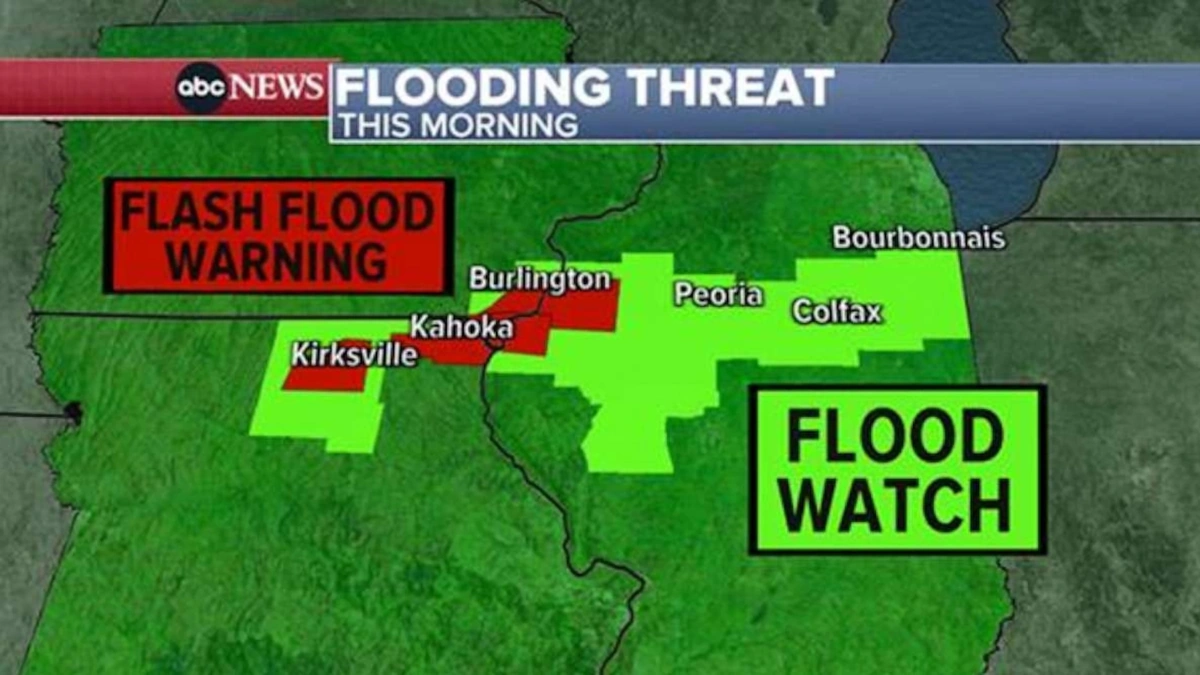Okay, let’s be real. When you see a flash flood warning scrolling across your phone, your first thought probably isn’t about the intricate dance between meteorology and urban planning. It’s probably more along the lines of, “Am I going to be able to get home?” or even worse… “Is my family safe?”. Let’s face it: these alerts can be scary!
I’m here to break down not just what a flash flood warning means, but why it matters and, more importantly, what you can do about it. Because information is power, and preparation is everything.
Decoding the Deluge | What’s a Flash Flood, Really?

First, let’s clarify what we’re dealing with. A flash flood isn’t just your run-of-the-mill heavy rain. It’s a rapid and intense surge of water, often triggered by excessive rainfall in a short period of time. We are talking about areas that normally would be dry being completely overtaken with rushing dangerous water.
Here’s the thing, flash floods are deceptive because they can strike with little to no warning (hence, the “flash”). This means even if it’s not raining where you are, a downpour miles away can send a wall of water your way. According to the National Weather Service (NWS Flash Flood Safety), flash floods are the number one weather-related cause of death in the United States, surpassing even hurricanes and tornadoes in certain years.
The Urban Jungle vs. Mother Nature | Why Cities Flood So Easily
What fascinates me is how our urban environments exacerbate the risk of flash floods . Think about it: cities are covered in concrete and asphalt. These materials are impermeable. This means that water can’t soak into the ground. Instead, rainwater flows rapidly into storm drains. In many older cities, the storm drain systems simply aren’t designed to handle the increasing intensity and frequency of extreme rainfall events.
Add to that the effects of climate change warmer air holds more moisture, leading to heavier downpours and you’ve got a recipe for disaster. Development and Construction in flood plains can lead to significant damage as well.
But, it’s not only cities that are at risk. Hilly and mountainous terrains are also extremely prone to flash floods . Steep slopes can cause rapid runoff, concentrating water into narrow valleys and canyons. It doesn’t take much rain to turn a dry creek bed into a raging river.
Beyond “Turn Around, Don’t Drown” | Practical Steps You Can Take
You’ve probably heard the slogan “Turn Around, Don’t Drown.” And it’s solid advice: never drive or walk through floodwaters. The water can be deeper and faster-moving than it appears, and it only takes a few inches of water to lose control of a vehicle.
However, let’s go beyond the basics. Here’s what I advise people to consider to protect themselves:
- Stay Informed: Monitor local weather forecasts and sign up for emergency alerts on your phone. The National Oceanic and Atmospheric Administration (NOAA) offers a Weather Radio service that broadcasts warnings and information 24/7.
- Know Your Evacuation Routes: If you live in a flood-prone area, familiarize yourself with designated evacuation routes. Identify higher ground you can reach quickly. Have a plan in place to contact family members.
- Protect Your Property: Consider flood insurance. Standard homeowner’s insurance doesn’t cover flood damage. Elevate utilities (furnace, water heater, electrical panel) if possible. Check that your property is graded appropriately for drainage.
- Prepare an Emergency Kit: Stock up on essential supplies, including water, non-perishable food, a flashlight, a first-aid kit, and medications. Keep copies of important documents in a waterproof container.
Long Term Planning and Mitigation
On a macro scale, we also need to consider long-term planning and mitigation strategies. Cities need to invest in upgrading infrastructure, improving drainage systems, and implementing green infrastructure solutions like green roofs and permeable pavements. These solutions can help absorb rainwater and reduce runoff.
Furthermore, strict zoning regulations are crucial to prevent building in flood-prone areas. We can use technology to help mitigate damage from flooding events , as well. For example, early warning systems that use sensors and predictive models can provide valuable time to prepare and evacuate.
FAQ | Flash Flood Warning Survival Guide
What if I am driving and a flash flood warning is issued?
Pull over to a safe location, away from flood-prone areas. Do not attempt to drive through floodwaters. Wait for the warning to expire or for conditions to improve.
What do I do if my car gets stuck in floodwaters?
Abandon the vehicle and move to higher ground. The car is replaceable; your life is not.
How can I stay informed about flash flood watches and warnings?
Download a weather app on your smartphone, monitor local news, and sign up for emergency alerts from your local government.
What’s the difference between a flash flood watch and a flash flood warning?
A flash flood watch means that conditions are favorable for flash floods to occur. A flash flood warning means that a flash flood is imminent or is already occurring.
How deep does water have to be to sweep away a car?
As little as 12 inches (30 cm) of moving water can sweep away most cars.
When we see a flood watch in effect, preparation makes all the difference.
Conclusion
The next time you see a flash flood warning , remember it’s more than just a weather alert; it’s a call to action. By understanding the risks, taking proactive steps, and advocating for smarter urban planning, we can build more resilient communities and protect ourselves and our loved ones from the destructive power of flash floods . Preparation is key!
And remember, stay safe out there! Make sure you are up to date on weather conditions.Stay safe and be prepared.




